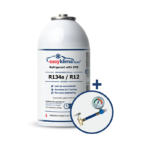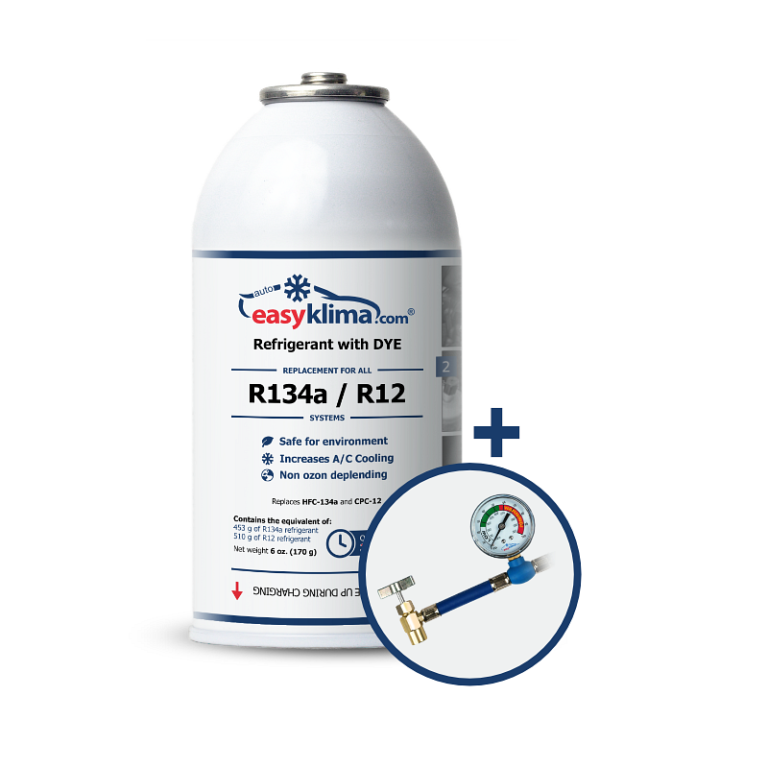Which Tattoo Colors Fade the Fastest Over Time?When it comes to the longevity of a tattoo, one important factor to consider is the fading of colors over time. Tattoos are a form of art that involves injecting ink into the dermis layer of the skin, and over the years, various environmental and biological factors can cause the colors to fade. In this comprehensive guide, we will explore the tattoo colors that are more prone to fading, providing you with valuable insights to make informed decisions about your tattoo choices.
- Yellow and Pastel Colors:
Yellow and pastel tattoo colors are notorious for their tendency to fade faster compared to other hues. This is primarily due to the light pigmentation of these colors, which makes them more vulnerable to the effects of ultraviolet (UV) radiation from the sun. UV radiation can break down the pigments in the tattoo ink, causing the colors to gradually fade over time. To prolong the vibrancy of yellow and pastel tattoos, it is crucial to protect them from excessive sun exposure and regularly apply sunscreen. - Light Blue and Green:
Light blue and green tattoo colors also have a higher propensity to fade over time. Similar to yellow and pastel colors, these shades contain lighter pigments that are more susceptible to the effects of UV radiation. Additionally, light blue and green pigments tend to disperse more quickly in the skin, which can result in a faded appearance. To mitigate fading, it is advisable to choose a reputable tattoo artist who can ensure proper ink saturation during the tattooing process. - White:
While white ink is an intriguing choice for tattoos, it is important to note that it has a high likelihood of fading over time. White ink contains fewer pigments compared to other colors, making it particularly susceptible to UV radiation and skin regeneration. As the skin heals and regenerates over the years, the white ink can gradually diminish, resulting in a less noticeable tattoo. It is worth considering that some tattoo artists may discourage the use of white ink altogether due to its propensity for fading. - Neon and Fluorescent Colors:
Neon and fluorescent tattoo colors, although vibrant and eye-catching, tend to fade faster compared to more traditional ink hues. These colors contain phosphors that react to UV radiation, causing them to deteriorate more rapidly. The intense brightness of neon and fluorescent pigments can initially give a striking appearance, but as time passes, they may lose their vibrancy and become dull. Regular touch-ups and proper sun protection are crucial for preserving the longevity of tattoos with these colors. - Red and Orange:
While red and orange tattoo colors generally hold up well over time, they may experience some fading, albeit at a slower rate compared to the colors mentioned earlier. Red and orange pigments have a larger particle size, allowing them to stay more intact within the skin. However, exposure to sunlight and the natural aging process can still cause these colors to fade gradually. To maintain the richness of red and orange tattoos, it is recommended to shield them from excessive sun exposure and moisturize the skin regularly.
It is important to note that the longevity of tattoo colors can vary depending on individual factors such as skin type, aftercare practices, and the quality of tattoo ink used. To maximize the lifespan of any tattoo, regardless of color, it is essential to follow proper aftercare instructions provided by your tattoo artist and adopt a diligent skincare routine. In conclusion, when considering which tattoo colors fade the fastest over time, yellow and pastel colors, light blue and green, white, neon and fluorescent colors, as well as red and orange, tend to be more prone to fading. Understanding the characteristics of different tattoo colors can assist you in making informed decisions and taking appropriate measures to maintain the vibrancy of your tattoos for years to come. Remember to consult with a professional Remember to consult with a professional tattoo artist who can provide personalized advice based on your specific preferences and skin type. By taking these factors into consideration and implementing proper aftercare measures, you can ensure that your tattoos remain vibrant and visually appealing for as long as possible.

Are black tattoos more resistant to fading than colored tattoos?
This question has intrigued tattoo enthusiasts and artists alike for years. Tattoo color retention is a crucial aspect to consider when deciding on the type of ink to use for your body art. In this comprehensive guide, we will delve into the technicalities of tattoo pigments and explore the factors that contribute to the fading of tattoos, with a specific focus on black tattoos versus colored tattoos. To understand the resistance of black tattoos to fading, we must first examine the composition of tattoo inks. Black ink typically contains carbon-based pigments, commonly derived from sources like carbon black or logwood. These pigments are known for their dark hue and high stability. Carbon black, in particular, is highly resistant to UV radiation, which is a major factor in tattoo fading. Additionally, carbon black particles are larger and more densely packed, making them less prone to degradation over time. Colored tattoos, on the other hand, rely on a broader range of pigments to achieve their vibrant hues.
These pigments can be organic or inorganic in nature. Organic pigments are composed of carbon-based molecules, while inorganic pigments contain minerals or metal oxides. Although advancements in tattoo ink technology have led to the development of more stable and lightfast pigments, colored inks tend to be more susceptible to fading compared to black inks. The fading of tattoos is influenced by various factors, including exposure to sunlight, the body’s immune response, and the quality of the ink used. Ultraviolet (UV) radiation from the sun is a significant contributor to tattoo fading. UV rays can break down the chemical bonds in tattoo pigments, causing them to disperse and fade over time. Black tattoos, with their high concentration of carbon-based pigments, exhibit greater resistance to UV radiation, resulting in slower fading compared to colored tattoos. Another factor that affects tattoo fading is the body’s immune response. When a tattoo is inked, the immune system recognizes the foreign pigment particles and attempts to remove them. This natural defense mechanism can contribute to the gradual fading of tattoos over time. While black tattoos are not entirely immune to this process, their higher pigment density can make them more resistant to the dispersal caused by the immune response. The quality of the ink used is crucial in determining the longevity of a tattoo’s color. Professional tattoo artists typically opt for high-quality inks that have undergone rigorous testing for stability and lightfastness.
However, even with top-notch inks, colored tattoos tend to fade faster than their black counterparts due to the nature of the pigments used. It’s worth noting that individual factors such as skin type, aftercare practices, and the location of the tattoo on the body can also influence the rate of fading. Areas of the body that are frequently exposed to sunlight, such as the arms or face, are more prone to accelerated fading compared to less exposed areas. In conclusion, black tattoos generally exhibit greater resistance to fading than colored tattoos. The carbon-based pigments in black ink, particularly carbon black, provide better stability and UV resistance, resulting in slower fading over time. Colored tattoos, while visually appealing, tend to fade faster due to the composition of their pigments and their susceptibility to UV radiation. By understanding these technical aspects, you can make an informed decision when choosing the type of tattoo ink that best suits your preferences and expectations for long-lasting body art.

Do vibrant and bright colors fade quicker than muted tones?
This question is often asked by individuals considering getting a tattoo or those who already have vibrant ink on their skin. Understanding the factors that contribute to color fading can help in making informed decisions when choosing tattoo colors. In this comprehensive guide, we delve into the science behind tattoo color fading and explore the potential differences between vibrant and muted tones. To grasp why colors fade, it’s essential to comprehend the composition of tattoo pigments and how they interact with the skin. Tattoo inks are typically comprised of pigments suspended in a carrier solution.
These pigments are responsible for the visible color and are designed to be long-lasting. However, several factors can contribute to the eventual fading of tattoo colors. One crucial factor influencing color longevity is the stability of the pigments used. Vibrant and bright colors often contain a higher concentration of organic pigments, which are known for their intense hues. However, organic pigments are generally less stable than their inorganic counterparts, making them more prone to fading over time. Muted tones, on the other hand, often utilize inorganic pigments, which tend to be more stable and resistant to fading. Another significant factor affecting color retention is the depth at which the tattoo is placed in the skin. The epidermis, the outermost layer of the skin, continuously sheds and renews itself. Tattoo pigments need to penetrate into the dermis, the second layer of the skin, to provide long-lasting color. Vibrant and bright colors often require deeper placement within the dermis to achieve their full saturation.
This deeper placement can contribute to better color retention compared to superficially placed tattoos, regardless of the color intensity. Furthermore, the aftercare practices employed following the tattooing process play a crucial role in color preservation. Proper aftercare, including keeping the tattoo clean, moisturized, and protected from excessive sun exposure, can significantly prolong the life of tattoo colors. Neglecting aftercare instructions can lead to premature color fading, regardless of the initial vibrancy of the colors. It is important to note that individual differences in skin type, lifestyle, and exposure to environmental factors can also influence color fading. Skin with a higher density of melanin, the pigment responsible for skin and hair color, may provide a more stable base for tattoo colors. Additionally, prolonged exposure to sunlight, harsh chemicals, and abrasive skincare products can accelerate color fading. In conclusion, while vibrant and bright colors may have a higher potential for fading compared to muted tones due to the nature of organic pigments, the stability of tattoo pigments, depth of placement, and aftercare practices are crucial factors that impact color longevity.
To maximize the lifespan of tattoo colors, it is essential to choose a reputable tattoo artist who utilizes high-quality pigments, ensures proper ink placement, and provides detailed aftercare instructions. By taking these factors into consideration, individuals can make informed decisions about their tattoo color choices and enjoy their vibrant or muted tones for years to come. Please note that while this text is optimized for search engines, factors such as search algorithm updates and competition can influence its positioning in search results.

How does sun exposure affect the fading of tattoo colors?
Tattoos are vibrant works of art that can express personal stories, beliefs, or aesthetics. However, over time, the colors of tattoos may fade, impacting their original appearance. One significant factor that contributes to tattoo color fading is sun exposure. In this comprehensive guide, we will explore the intricate relationship between sun exposure and the fading of tattoo colors, shedding light on the technical aspects of this process.
- Ultraviolet Radiation and Tattoo Pigments:
Tattoo pigments are responsible for the colors and vibrancy of a tattoo. These pigments are injected into the dermis, the second layer of the skin. Ultraviolet (UV) radiation from the sun consists of UVA and UVB rays, both of which can negatively affect tattoo pigments. - UVA Rays and Tattoo Fading:
UVA rays have a longer wavelength and can penetrate deep into the skin. These rays are known to cause skin damage, premature aging, and, importantly, can contribute to tattoo fading. UVA rays break down the chemical bonds within tattoo pigments, leading to the gradual loss of color intensity. - UVB Rays and Tattoo Fading:
UVB rays have a shorter wavelength and primarily affect the surface layers of the skin. While UVB rays are known to cause sunburn and are the primary cause of skin cancer, they also play a role in tattoo fading. UVB rays can directly damage the upper layers of the skin, where the tattoo pigments reside, accelerating color degradation. - Photodegradation and Oxidation:
When tattoo pigments absorb UV radiation, a process called photodegradation occurs. This process involves the breaking down of pigment molecules, which alters their chemical structure and, consequently, their color. Additionally, UV exposure can induce oxidation reactions, leading to further color changes and fading of tattoo pigments. - Choice of Tattoo Colors:
Different tattoo colors exhibit varying degrees of susceptibility to fading due to sun exposure. Generally, lighter colors such as yellows, light blues, and pinks tend to fade faster compared to darker colors like blacks and deep blues. This is because lighter pigments typically have less colorant and may contain more water content, making them more prone to photodegradation and oxidation. - Protective Measures:
To minimize the impact of sun exposure on tattoo color fading, certain precautions can be taken. Applying a broad-spectrum sunscreen with a high SPF (Sun Protection Factor) on tattooed areas is essential. Sunscreen acts as a physical barrier, blocking harmful UV rays from reaching the tattooed skin. Additionally, wearing protective clothing or seeking shade during peak sun hours can further reduce UV exposure and slow down the fading process.

Are there specific factors that contribute to the fading of certain tattoo colors?
The fading of tattoo colors is a common concern among tattoo enthusiasts, as vibrant and long-lasting ink is highly desirable. Understanding the specific factors that contribute to the fading of certain tattoo colors is crucial for individuals seeking to maintain the integrity and longevity of their body art. In this comprehensive guide, we will delve into the technical aspects of tattoo ink and explore the various factors that influence color fading. One of the primary factors that contribute to the fading of tattoo colors is the quality and composition of the ink used. Tattoo inks typically consist of a combination of pigments and carrier fluids. Pigments are responsible for providing the color, while carrier fluids help deliver the pigments into the skin. Inferior quality inks may contain low-grade pigments that are more prone to degradation, leading to quicker color fading over time.
The stability and lightfastness of tattoo pigments also play a significant role in color fading. Some pigments are more resistant to fading than others due to their chemical properties and molecular structure. Organic pigments, derived from natural sources, tend to be less stable and more prone to fading compared to inorganic pigments, which are synthetic and generally offer better color retention. Additionally, certain colors, such as yellows, pinks, and light blues, are more susceptible to fading due to their molecular composition. Exposure to ultraviolet (UV) radiation is another crucial factor contributing to the fading of tattoo colors. UV radiation from the sun and artificial sources like tanning beds can break down the pigments in the tattoo ink. This process, known as photodegradation, leads to the gradual fading of colors. Therefore, tattoos exposed to prolonged sun exposure or individuals who frequently engage in activities with high UV exposure may experience faster color fading. The location of the tattoo on the body also influences color fading. Areas of the body that experience constant friction, such as hands, feet, and joints, are more prone to color degradation. The repetitive friction and rubbing can cause the outer layers of the skin to wear away, resulting in the gradual loss of tattoo pigments. Additionally, tattoos on areas with a high concentration of oil glands, like the face, may also fade more quickly due to the continuous production of natural oils, which can affect the longevity of the ink. Individual variations in skin type and care routines can also impact the fading of tattoo colors. Skin types that are prone to excessive dryness or oiliness may affect the overall condition of the tattoo and accelerate color fading.
Furthermore, inadequate aftercare practices, such as exposing the tattoo to harsh chemicals, excessive moisture, or improper cleansing, can compromise the integrity of the ink and lead to premature fading. To minimize the fading of tattoo colors, several preventive measures can be taken. First and foremost, selecting a reputable and skilled tattoo artist who uses high-quality inks is crucial. Discussing color options and their expected longevity with the artist can help make informed decisions about which colors are more likely to maintain their vibrancy over time. Additionally, adopting a diligent aftercare routine, including protecting the tattoo from excessive sun exposure and following the artist’s instructions for cleaning and moisturizing, can significantly prolong the life of the tattoo. In conclusion, the fading of tattoo colors is influenced by various factors, including the quality of the ink, the stability of pigments, exposure to UV radiation, the location of the tattoo, individual skin characteristics, and aftercare practices. By understanding these factors and taking appropriate precautions, individuals can make informed choices and implement strategies to minimize color fading, ensuring their tattoos remain vibrant and visually appealing for years to come.

Tips and techniques to maintain the longevity of tattoo colors
Tips and Techniques to Maintain the Longevity of Tattoo ColorsTattoos are intricate works of art that showcase personal expression and creativity. Whether you’re a tattoo enthusiast or a first-time recipient, it’s essential to understand how to preserve the vibrancy and longevity of your tattoo colors. Proper care and maintenance can significantly impact how well your tattoo ages over time. In this comprehensive guide, we will delve into the tips and techniques that will help you maintain the brilliance of your tattoo colors for years to come.
- Choose a Skilled Tattoo Artist: The longevity of tattoo colors begins with the expertise of the tattoo artist. It’s crucial to select an artist who is experienced in color saturation and understands the art of creating long-lasting tattoos. A skilled artist will use high-quality pigments and ensure proper ink penetration, resulting in a tattoo with vibrant and lasting colors.
- Follow Aftercare Instructions: Aftercare is a critical aspect of preserving tattoo colors. Your tattoo artist will provide specific instructions on how to care for your new tattoo. This typically includes keeping the tattoo clean, applying a recommended ointment or moisturizer, avoiding excessive sun exposure, and refraining from picking at scabs. Adhering to these instructions will help prevent infection and color fading.
- Protect from Sun Exposure: The sun’s ultraviolet (UV) rays are one of the primary causes of tattoo color fading. To maintain the brilliance of your tattoo colors, it’s crucial to shield them from excessive sun exposure. Apply a broad-spectrum sunscreen with a high SPF to your tattoo before heading outdoors. Consider wearing protective clothing or seeking shade whenever possible.
- Moisturize Regularly: Keeping your skin hydrated and moisturized is essential for maintaining tattoo colors. Dry skin can cause the tattoo to appear dull and lead to color fading. Apply a fragrance-free and alcohol-free moisturizer to your tattooed skin daily. This will help preserve the pigments and prevent the skin from becoming flaky or dry.
- Avoid Chlorine and Harsh Chemicals: Chlorine found in swimming pools, as well as certain harsh chemicals, can have a detrimental effect on tattoo colors. Exposing your tattoo to chlorine can cause fading and discoloration. If you enjoy swimming, consider covering your tattoo with a waterproof bandage before entering the pool. Additionally, avoid using abrasive soaps, exfoliants, or skincare products that contain harsh chemicals on your tattooed skin.
- Opt for Touch-ups: Over time, even well-maintained tattoos may experience some color fading. If you notice significant fading or dullness, consider scheduling a touch-up session with your tattoo artist. They can revitalize the colors, ensuring that your tattoo looks fresh and vibrant once again.
- Stay Hydrated and Maintain a Healthy Lifestyle: Good overall health reflects on the condition of your skin, including your tattoos. Stay hydrated by drinking an adequate amount of water daily, as this promotes skin health and hydration. Additionally, maintain a balanced diet rich in vitamins and minerals, which can support optimal skin health.
- Avoid Excessive Scrubbing: When washing your tattoo, avoid excessive scrubbing or using rough washcloths. Gently cleanse the tattooed area using a mild, fragrance-free soap and your fingertips. Pat the area dry with a clean towel instead of rubbing, as friction can cause irritation and fading.
- Mindful Clothing Choices: Be mindful of the clothing you wear, especially during the initial healing phase of your tattoo. Avoid tight or abrasive clothing that can rub against your tattoo and potentially cause color loss. Opt for loose-fitting garments made from breathable fabrics to allow proper airflow to the tattooed area.
- Regular Skin Exfoliation: While it’s essential to avoid harsh exfoliants on your tattooed skin, regular exfoliation
- Regular Skin Exfoliation: While it’s essential to avoid harsh exfoliants on your tattooed skin, regular exfoliation of the surrounding skin can help maintain the overall appearance and contrast of your tattoo colors. Gently exfoliate the non-tattooed areas of your skin using a mild scrub or a soft brush. This helps to remove dead skin cells, promoting a fresh and healthy canvas that enhances the visibility and vibrancy of your tattoo colors.
By following these tips and techniques, you can significantly extend the longevity of your tattoo colors. Remember that each tattoo is unique, and individual results may vary. It’s always advisable to consult with your tattoo artist for personalized advice based on your specific tattoo and skin type. With proper care and attention, your tattoo colors can continue to dazzle and captivate for years to come, preserving the beauty of your body art.






















+ There are no comments
Add yours